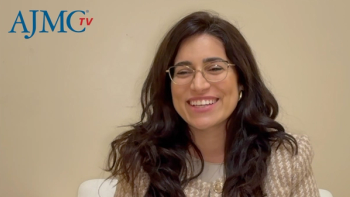
AMA's McAneny Calls for Real-time Oncology Payment Model Led by Physicians
In the keynote address at Patient-Centered Oncology Care® 2018, Barbara McAneny, MD, a New Mexico oncologist/hematologist and the current president of the American Medical Association (AMA), shared her diagnosis for the current crisis in US healthcare, as well as a prescription—a new real-time oncology payment model led by physicians.
America’s healthcare system costs too much, not just for patients who become ill but also for medical students who must pay for their own training and oncology practices now trying to navigate payment models that ask them to take on risk associated with the eye-popping costs of cancer drugs.
Yet the major alternative payment model (APM) put forth by Medicare, the
McAneny shared her diagnosis for the current crisis in US healthcare, as well as a prescription—a new real-time oncology payment model led by physicians—in her keynote address to attendees at Patient-Centered Oncology Care® (PCOC®) 2018, the annual meeting presented by The American Journal of Managed Care®, which took place November 16 at Sofitel in Philadelphia, Pennsylvania.
Healthcare has reached a crisis because payers are controlling the process, and doctors are being driven away by administrative burdens and “burnout,” McAneny said. Medical education is extremely expensive, and then young doctors enter professional life burdened with $200,000 or more in debt that limits their options. “We can’t afford to train someone for 10 to 12 years and then drive them crazy, so they quit,” she said.
Yet, that’s what’s happening to so many physicians, and it’s contributing to physician shortages. “It used to be we had to push doctors out the door at age 70,” McAneny said. Now, too many get into their 50s and have had enough of documentation burdens that today’s electronic health systems demand, or as PCOC® Chairman Joseph Alvarnas, MD, of City of Hope, would describe later in the day, “How do we get to a future that isn’t built on people working until midnight?”
McAneny became well-known for developing the COME HOME model at her New Mexico practice, which saved $2100 annually per patient by prioritizing triage protocols, clinical pathways, same-day appointments, and better patient education—all with the goal of keeping patients out of the emergency room and avoiding hospital stays. “We created savings through the things that the doctors can control,” she said.
The OCM does much of this—but it adds features McAneny does not like. While the model keeps people out of the hospital, it adds documentation burdens that she doesn't like.
“My [electronic medical record] is really good at managing patients one at a time,” but is not as good at population health, she said.
But the bigger challenge is the way the model handles drug costs. McAneny said Medicare “low balls” these costs, and the Indian Health Service—which covers many of her patients—is even worse.
Oncologists are put in the position of taking on risk and becoming miniature insurers, when they don’t have actuaries or reserves to predict who will come through the door, much less to absorb losses. As a result, more and more independent physician practices are being bought up by hospitals, which doubles the cost of care.
And who is making money? McAneny showed a slide that reported Anthem Blue Cross Blue Shield reporting a record profit.
“Everybody is familiar with these stories, with what’s going on in oncology with the site of service differential,” she said. “It has to change. This cannot go on.”
If nothing changes, McAneny said, healthcare costs will crowd out everything else in the federal budget, and that will not be acceptable or sustainable. She pointed out incongruities in federal policy that will pay to amputate a foot for someone with diabetes but bankrupt a person who needed insulin that could have prevented that complication.
“What patients want is not healthcare, but health,” she said.
The AMA is pushing for changes that give physicians more control over healthcare, from rethinking medical education to putting doctors at the center of healthcare delivery. To that end, McAneny notes that CMS’ emphasis on the Medicare Shared Savings Program (MSSP), delivered through accountable care organizations, has never quite achieved what she managed to do with COME HOME.
Instead of $2100 in savings per patient, MSSP puts doctors through enormous expense and inconvenience to achieve $313.7 million in savings for CMS. “That’s a lot if you won the lottery but not if you’re running Medicare—$36 per patient is one office visit,” McAneny said.
In cancer care, McAneny and a coalition of oncology practices called the National Cancer Care Alliance have stepped forward with a different alternative payment model called
The model, “creates an accurate cost target that will be a valuable tool for optimizing patient management while avoiding actuarial risks of adverse patient clinical characteristics,” the proposal states. “Practices will be at risk only for factors they can control, thereby avoiding damage to the oncology care delivery infrastructure across the country.” The model will incorporate the multiple data points that bombard physicians today and allow for personalization based on patient characteristics.
McAneny will soon present the model to the Physician-Focused Payment Model Technical Advisory Committee, or PTAC, which was to be empowered to approve doctor-driven payment models. But thus far, CMS has not approved any alternative payment models that have been through PTAC.
But if MASON succeeds, it will be a step toward letting physicians return to their core mission, McAneny said. “We need doctors and hospitals to take care of patients."
Newsletter
Stay ahead of policy, cost, and value—subscribe to AJMC for expert insights at the intersection of clinical care and health economics.





























































